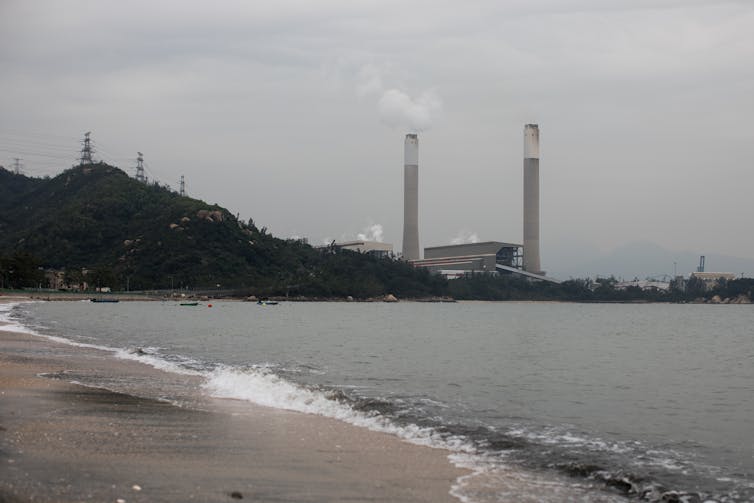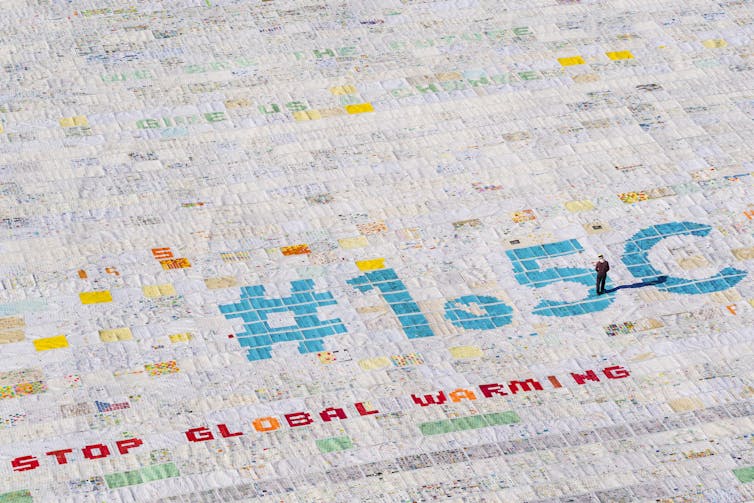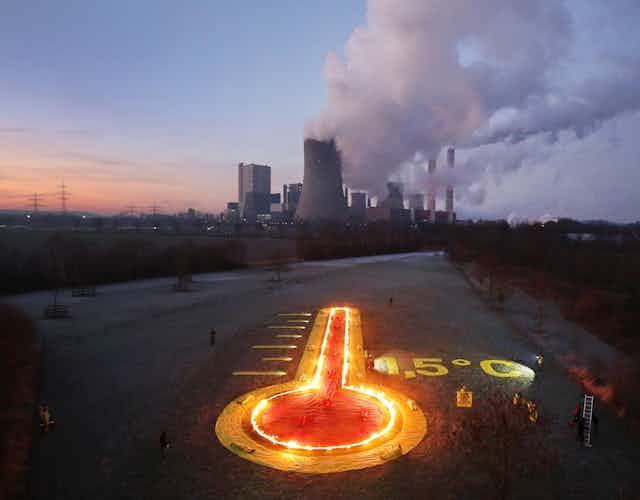Ever since governments at the 2015 Paris climate summit set 1.5°C as the desired limit for global warming, scientists and journalists alike have regularly asked whether it is achievable. The question arose again recently when the UN published a report of national emission-cutting pledges for the next decade. It will be posed regularly before the publication of the IPCC’s Sixth Assessment Report in July – a synthesis of the most recent information scientists can offer on climate change – and the UN climate summit in November.
Science is already clear that the 1.5°C target can be met. But science cannot say whether it will be met. The outcome depends on two things we cannot know with precision: how sensitive the climate system is to rising greenhouse gas concentrations, and how quickly the world will cut emissions.
Humanity has little sway over climate sensitivity. But on the second issue – what we do about emissions – humanity clearly holds the lever of influence.
The recent UN report showed that governments are not pushing that lever on short-term emissions hard enough. Only 40% of countries have so far set a new emission-cutting target for 2030, as they are due to under the Paris Agreement. Collectively, they are pledging to bring emissions down by 1% below 2010 levels rather than the 45% proposed by the IPCC as being compatible with meeting the 1.5°C limit.
Yet, since autumn 2020, China, the EU, the US, Japan and South Korea have all pledged to reach net zero emissions around mid-century. If they follow through, that would halve the gap to the 1.5°C target – and that’s without factoring in the wider effect on global markets, investment and prices that will inevitably follow.

So the future is not set, and much will depend on decisions made in these next few crucial years.
While scientists might be tempted to spend much of 2021 arguing whether the Paris Agreement’s limit is feasible, having this as a live debate could itself lower our chances of delivering the target.
Consensus and empowerment
The chances of stopping warming at 1.5°C increase the faster the global community cuts greenhouse gas emissions to zero. And how fast we do that depends on the interrelated actions of a huge mix of people – government ministers most importantly, but also business chiefs, investors, banks, religious leaders, activists and citizens. The last few years have seen efforts accelerate across those constituencies, from the establishment of financial mechanisms by the UN to the Fridays for Future movement.
Across these initiatives, one inescapable fact is how central the 1.5°C target now is. The open letter that Fridays for Future sent to political leaders in 2020 referred to the 1.5°C limit five times, and not at all to the other Paris Agreement goal of keeping global warming “well below 2°C”. When deciding their net zero emissions targets, the governments of the UK and New Zealand both explicitly referred to the 1.5°C limit as the global “guardrail” and set their national decarbonisation trajectories accordingly. The UN secretary general, António Guterres, exhorts governments and businesses to meet this goal specifically rather than “well below 2°C.”
So to claim that 1.5°C is out of reach would be to undercut all of those initiatives and many others – to tell them all, from minister to investor to youth activist, that they are doomed to fail.
Social science tells us a lot about the effects of different types of messaging on climate action, including on two issues that are significant here: consensus and empowerment.
From climate change to vaccination, a consensus message from scientists increases public faith and willingness to act. We’re seeing how mixed messaging damages trust right now with the AstraZeneca coronavirus vaccine. Would climate contrarians have put so much effort into undermining the perception of consensus among climate scientists were not the perception of consensus important to decarbonisation?

The world stands a better chance of tackling climate change if people feel they have a chance of succeeding. Academic research backs up this common sense. A major study in 2020 showed how the “we cannot do it” argument works to delay action, noting that such statements “can result in a paralysing state of shock and resignation”, which is a deterrent to active engagement in solutions. Research also shows that public disengagement is the inevitable result of a perceived sense of conflict among scientists. This may be the intent of people wishing to delay climate action, but it’s presumably not an outcome that scientists who support decarbonisation seek.
Read more: Climate denial hasn't gone away – here's how to spot arguments for delaying climate action
The IPCC is perhaps the biggest consensus-forming initiative in the whole of science. Its 2018 Special Report found 1.5°C achievable and, judging from private conversations, this year’s report is unlikely to close the door.
So will our species succeed in limiting global warming to 1.5°C and so stave off some of the more crippling effects of climate change? No one can possibly know. Can we succeed? As former US president Barack Obama once said: “Yes, we can.” And knowing that we can makes it more likely that we will.

